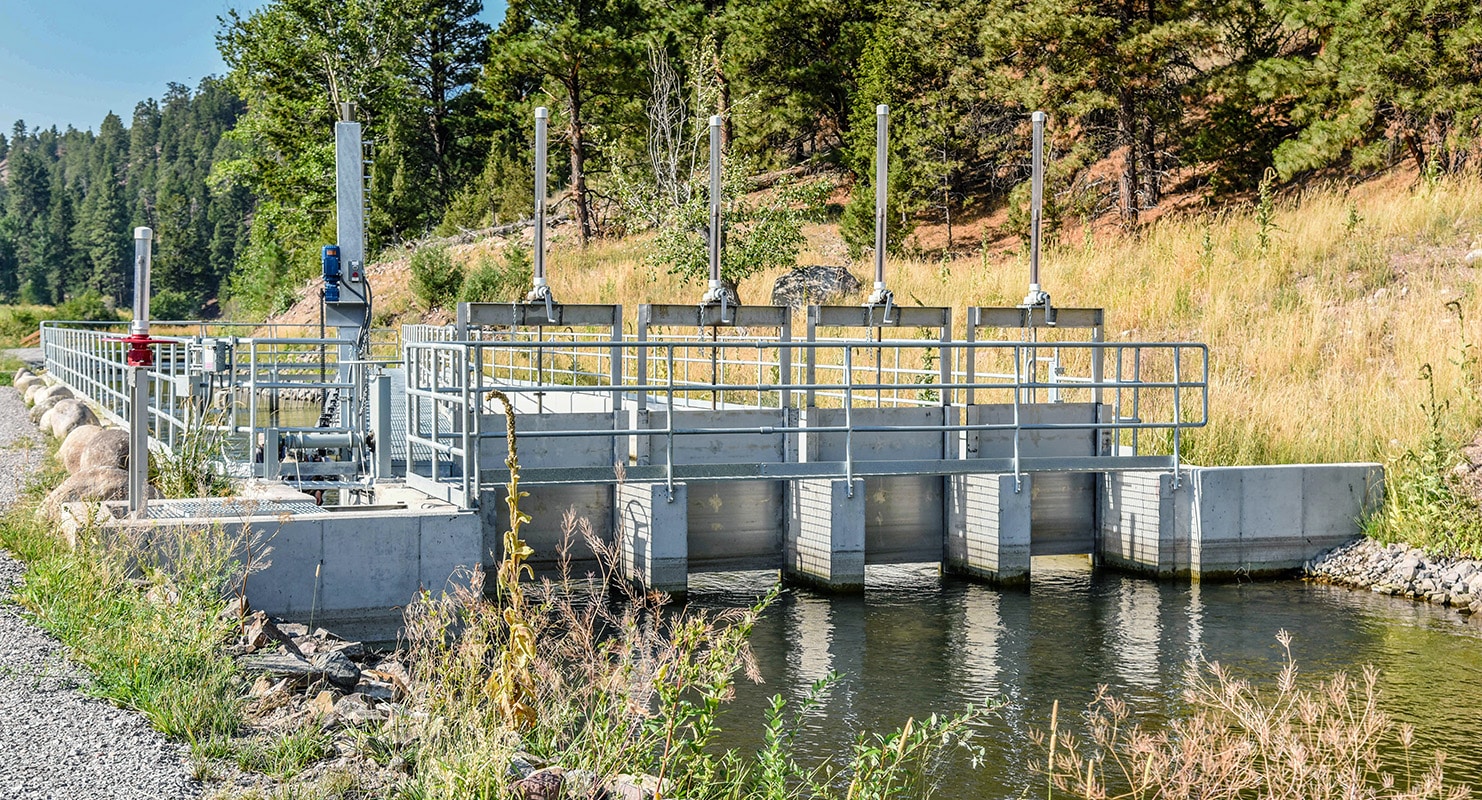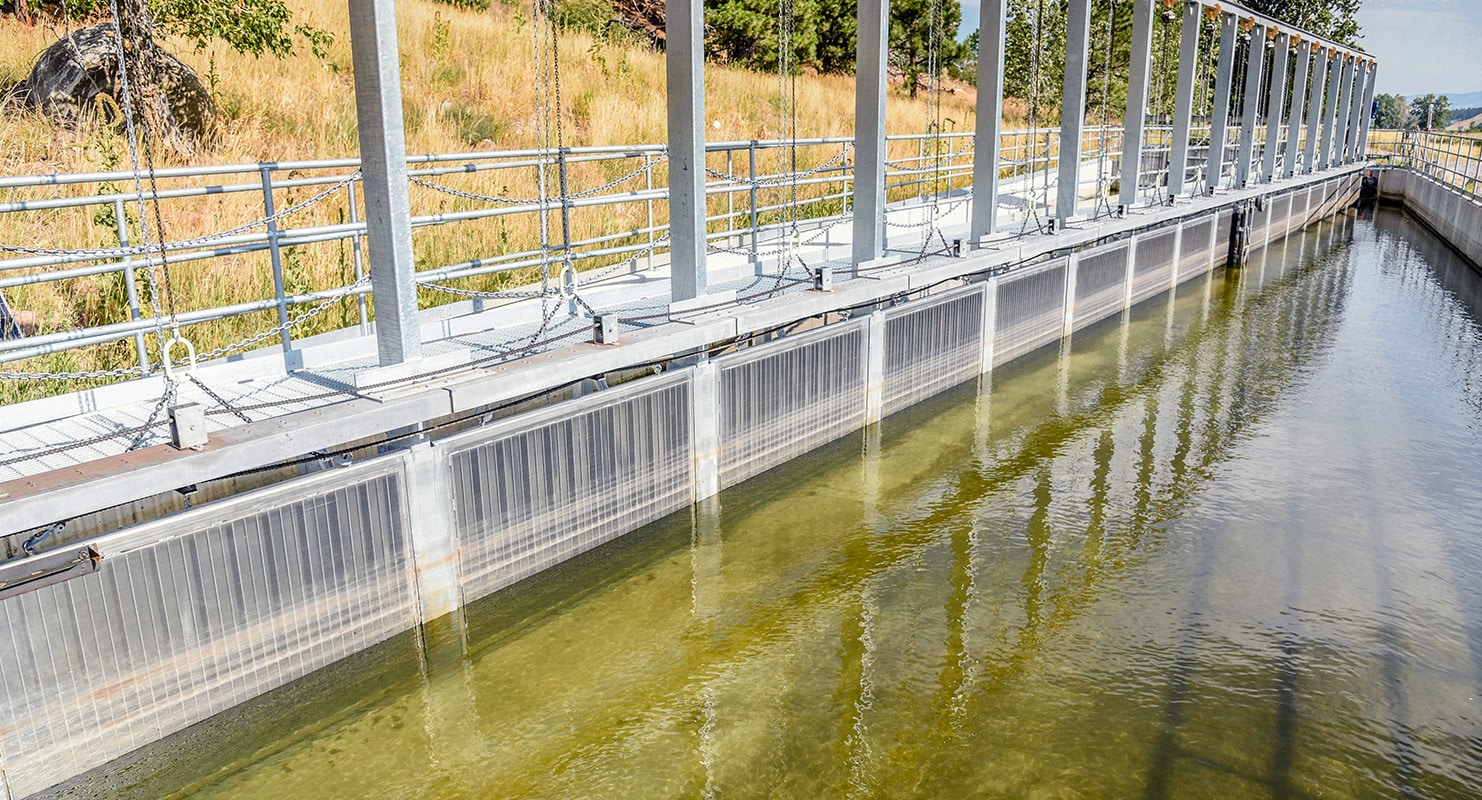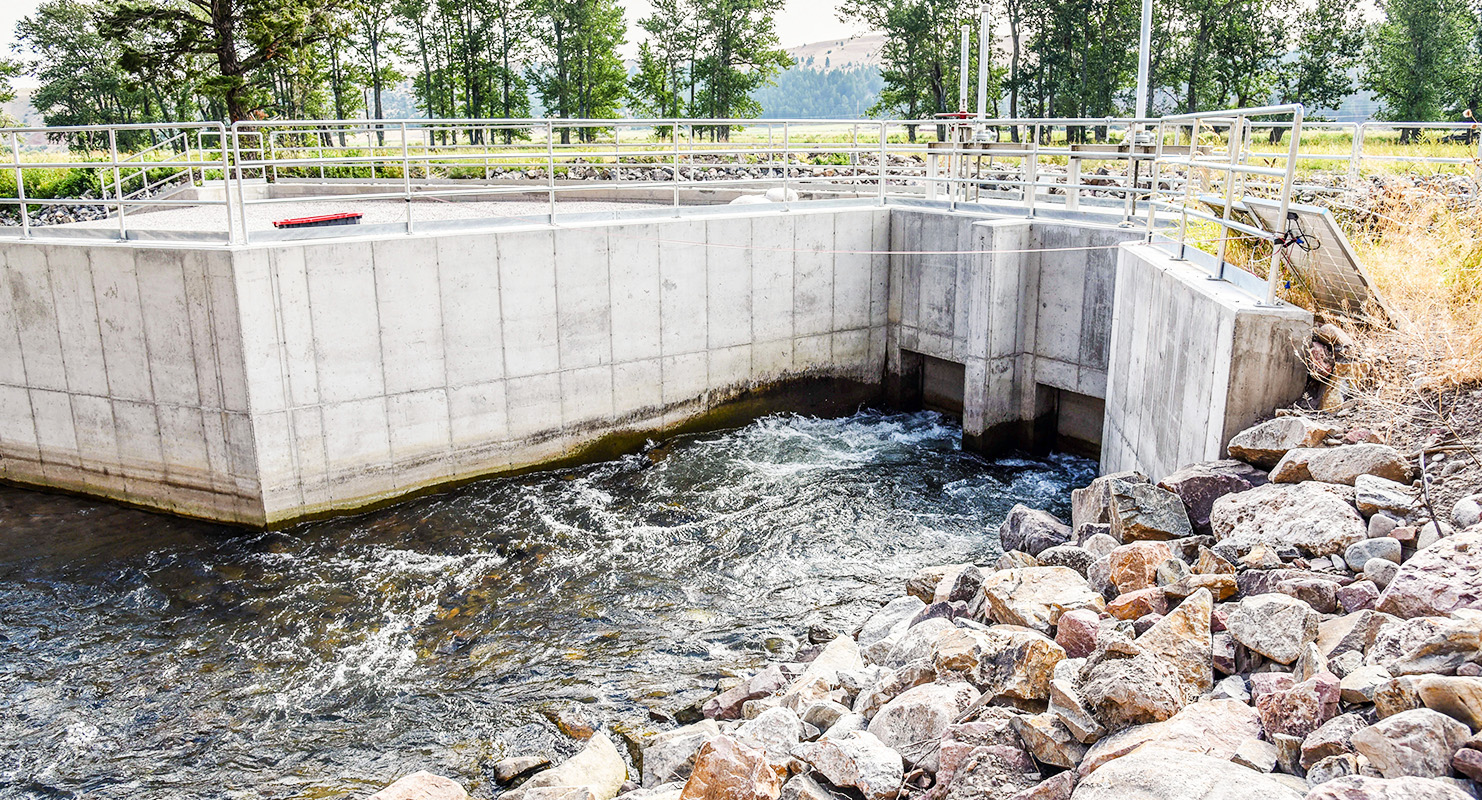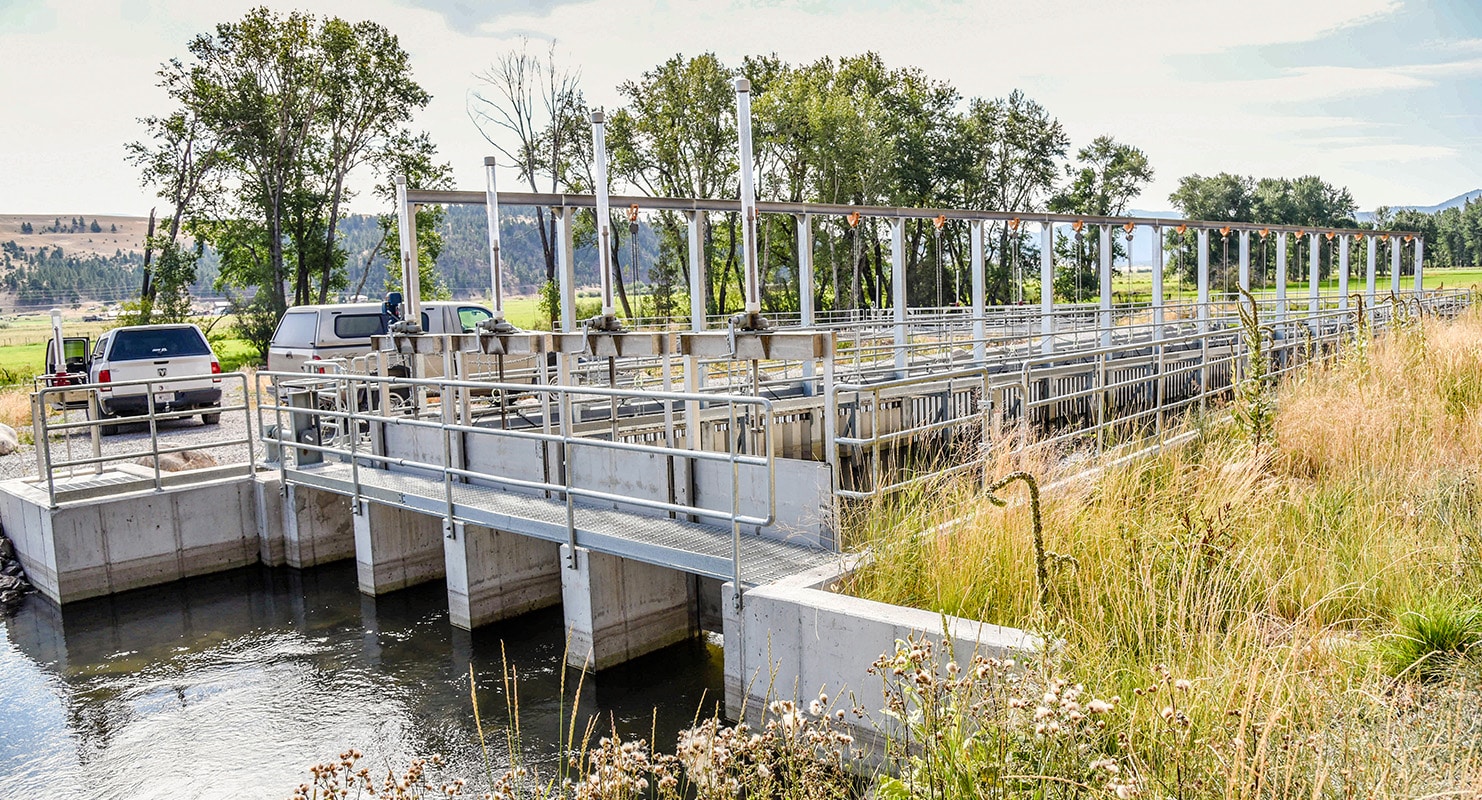A Holistic Design
In addition to encouraging fish to stay out of the irrigation ditches and in Flint Creek, Morrison-Maierle and its partners created a holistic design that improved the infrastructure itself by reorienting gates, realigning the diversions and solutions to remove debris (metal grates), and improving bedload sediment (sluice gates).
Morrison-Maierle and its partners were awarded the project in 2016. Consideration was given to consolidating Allendale and the privately-owned ditches, but in the end, they remained in their original locations.
The new irrigation infrastructure includes:
- Stable roughened riffle diversions.
- Modern intake structures with gates, debris racks, and sediment flushing gates.
- Measures to guard against ice, debris, and logs coming down Flint Creek during high flow.
- New lining and Parshall flumes.
- Four new fish screens: one large vertical flat plate in Allendale, and three smaller, corrugated water screens in the privately-owned ditches.
- Designs to help make maintenance and operational duties easier and safer to access.









